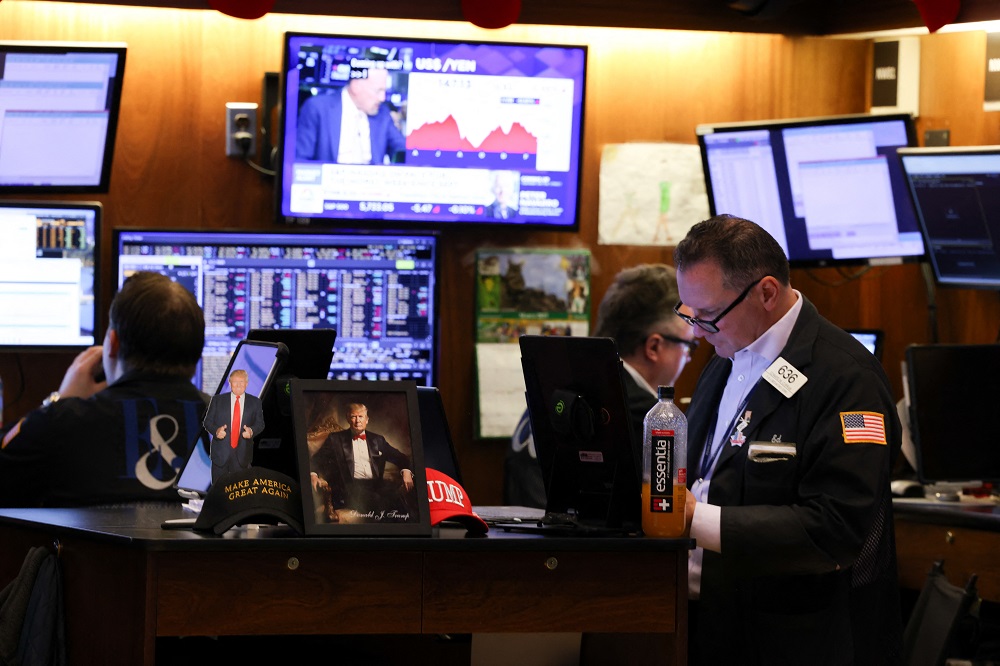“Escape valve” for global risk assets
US stock markets have crumpled in the past few weeks. While this has put pressure on global risk assets, it has been nullified to some extent by the US dollar’s weakness. This ‘escape valve’ should stay in place unless the US stock market slide turns into an uncontrolled rout.

It has been customary to expect slumps in stocks to be associated with US dollar strength, not weakness. Spikes in stock market volatility, such as the one seen in recent weeks usually see the US dollar spike higher as well for two apparent reasons.
The first is that US assets, such as the US dollar and treasuries, act as a safe asset at a time when risk assets are collapsing. Nervous investors flee to the US dollar and this lifts the value of the greenback.
Secondly, the US dollar acts as the principle funding currency for asset positions via the FX swap market and, if these positions are unwound rapidly, US dollars can be bought back in the spot market. Hence, even if investors are not selling riskier assets to flee to the ‘safety’ of the US dollar, they are still buying US dollars to unwind positions in riskier assets. Either of these two routes can cause the US dollar to spike when stocks crumble and the VIX index surges. This surge in the US dollar compounds the pressure on riskier assets elsewhere.
For not only does the rise in the VIX index weigh on risk assets directly as global stocks fall in sympathy, but US dollar strength can cause other pressures, such as weaker local currencies which creates pressure for higher interest rates in many countries. In short, there is a double whammy in which risk assets slump and the US dollar surges.
But that’s not happening right now. Instead, the slump in stocks is occurring in the context of a slump in the US dollar as well. Needless to say, that’s quite unusual. It might be down to the fact that the origin of stock market weakness clearly lies in the US. However, we’ve seen plenty of other instances in the past when the US was the instigator of equity market carnage but the US dollar has rallied.
The most obvious example was the global financial crisis which originated in the US housing market, caused risk assets to slump – but caused the US dollar to surge. If the US-centric nature of this current stock market downturn is not to blame for the negative correlation between the VIX and the US dollar at the moment, what is? The most obvious answer is that the US dollar’s safe-asset status has declined for whatever reason. Unsurprisingly, we can cite many factors that might have precipitated a decline in the dollar’s safety properties. These are based predominantly, but not exclusively around the new Trump administration. They include factors such as tariffs, the US’s role in geopolitics, the ‘weaponisation of the dollar through sanctions, the eschewing of a central bank digital currency, the embrace of crypto currencies and more.
Are these factors really sufficient to undermine the US dollar’s safe-asset status to an extent that the dollar no longer rallies when risk assets slump? Steven Barrow, Head of Standard Bank G10 Strategy is not so sure. For a start, there’s no sense that the US dollar’s pivotal global financing role has been undermined. Sure, more investors around the world have borrowed yen recently given low Japanese rates but international yen borrowing is still a fraction of US dollar lending (BIS data shows that international yen credit in Q3 2024 was only around 3% of global dollar credit).
In other words, if the slump in risk assets accelerates to such an extent that it causes a panicked unwinding of positions, and repaying of US dollar loans, the greenback is likely to rally. Of course, central banks stand ready to supply US dollars should any sort of shortage develop, via central bank swaps, but Steven Barrow suspected that this would still be insufficient to stop the US dollar from rising. All this suggests to us that the US dollar can only continue to fall in the event of weakness in risk assets such as equities as long as this fall is sufficiently orderly that it does not cause a panicked rush to pay down US dollar loans. If that’s not the case, the US dollar should rebound.








